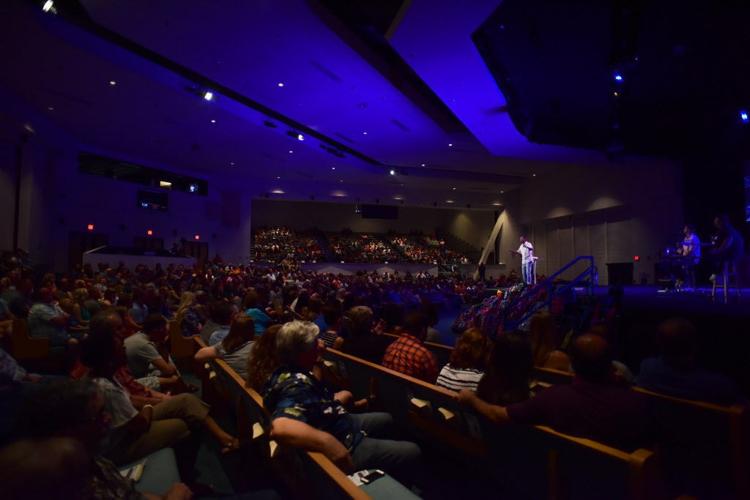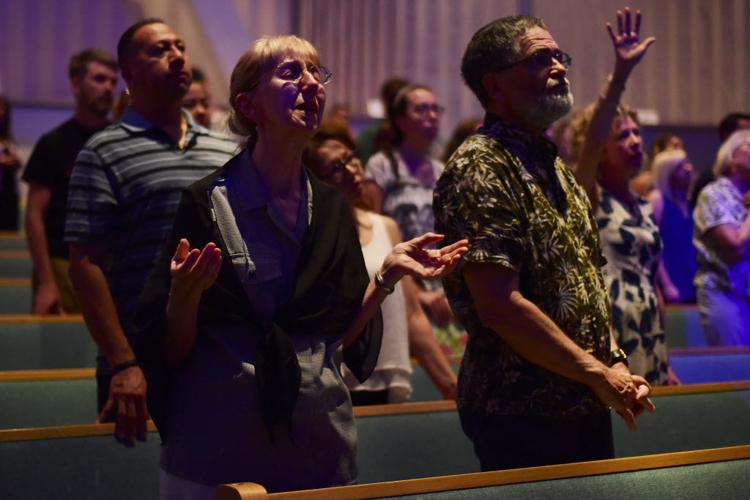When Rabbi Joseph Shemtov first arrived here in July about 30 years ago, the assumption he encountered still challenges many of the city’s faith communities.
“What are you doing here now?” people asked him. “Don’t you know that God is in San Diego?”
Shemtov of Chabad Tucson, 2443 E. Fourth St., disagreed.
Although some congregations see attendance dips as snowbirds flee and families road-trip, religious life does not wilt under the summer heat.
In fact, many congregations embrace the season’s lazier days, experimenting with creative programs and targeting kids and teens who have more time to play. And although communities still budget for fewer financial contributions during the summer, online giving has eased some of that stress, allowing people to give while away.
Slow months and slim attendance let faith communities prepare for August — back-to-school and back-to-routine for leaders and laypeople alike.
“We look at June and July, and we say we have big weeks and small weeks,” said the Rev. Sean Haynes, lead pastor at Emmanuel Baptist Church, 1825 N. Alvernon Way. “We’re not going to worry about it.”
During most of the year, the church averages between 230 and 250 adults and children at both Sunday worship services. In May, Emmanuel turnout has traditionally begun to slip, monthly attendance records for 2012 to 2015 show. This year, though, numbers did not drop until June and July.
“What I have learned at Emmanuel is there is no rhyme or reason to some people being or not being at church because of schedules,” Haynes said.
One summer Sunday, attendance may slump to 190 but then spike back to normal the next week.
“Rather than saying, ‘We want you to choose between us and your vacation or choose between us and family time,’ we just say, ‘This is the ebb and flow of life,’ ” Haynes said.
Bible meets Dr. Seuss
The Rev. Jim Wiltbank of Saint Francis in the Foothills United Methodist Church, 4625 E. River Road, decided long ago to treat churchgoers who brave the heat.
“For some reason, they think that being someplace like Minnesota is desirable over the desert,” joked Wiltbank, who has pastored St. Francis for about one year.
With 16 total years of experience pastoring in Phoenix and Yuma, Wiltbank remembers losing about half of his congregation during a Yuma summer. Compared to that, Tucson is nothing, even with about 50 snowbirds at his church.
Usually, his congregation sees roughly 150 attendees on Sunday. This summer, as the church transitions between music directors, it eliminated one of the three Sunday morning services, making the remaining hours fuller.
“I have decided every summer in Arizona, I’m going to do something special just for that core that stays here,” Wiltbank said. “This summer, we’re doing Dr. Seuss. Each week, we are looking at a Dr. Seuss book and how that helps us understand the Gospel.”
Take, for example, the Sneetches.
“Some had stars, and some didn’t, and they looked down on each other,” Wiltbank said. “The whole of the Christian message is even if I have a star that looks great, I don’t look down on you. We tried to apply it.”
Wine, cheese, Torah
At Temple Emanu-El, 225 N. Country Club Road, summer means a Chardonnay Shabbat, with wine and cheese and an earlier service. That actually draws some who don’t come as regularly in the fall.
“It’s a strange phenomenon,” said Rabbi Samuel Cohon, the senior rabbi, adding that the synagogue has less on the calendar so scheduled programs such as its adult education series Hot Topics in the Hot Sun are well-attended.
“The reputation was, no one does anything during the summer, you just do service,” Cohon said. “But it’s not that you stop being Jewish because it’s hot.”
A summer sampler
Churches have freedom to explore creative outreach and dabble in new programs during the summer because congregations are not tethered to Christmas or Easter, said the Rev. Greg Foraker, assistant to the rector at St. Philip’s in the Hills Episcopal Church, 4440 N. Campbell Ave.
The choir, for example, becomes a drop-in operation that amps up its repertoire of familiar hymns, allowing other parishioners to test their pipes with well-known tunes.
The church is also drumming up support this season for its new laundry ministry. On the second Wednesday of the month, St. Philip’s provides dryer sheets to low-income members of the community at Northgate Laundry.
“I think people just like changing it up and trying something new in the summer season, and I think we foster that here,” Foraker said.
Holiday break
Like Christian congregations, Jewish communities have fewer holidays in the summer to boost attendance or dictate programs, making it easier for staff workers to take vacations or do building maintenance.
The same is not true for mosques, with Ramadan once again falling during the summer and concluding in July with the Eid al-Fitr celebration.
“During the month of Ramadan, people try to offer congregation prayers (at the mosque) rather than their own prayers,” said Umer Shahid, the secretary of public affairs for the Ahmadiyya Muslim Community’s Tucson branch.
This year, weekends especially drew a crowd at the mosque, 250 W. Speedway, when the community came together to pray and eat dinner to break the day’s fast.
School’s out
Many congregations funnel their efforts toward students this time of year, taking advantage of the younger crowd’s freedom from school.
At Oro Valley Church of the Nazarene, 500 W. Calle Concordia, the energy leading up to student camps is enough to offset the approximate 20 percent drop in attendance the church saw this year between peak months and July, said the Rev. Craig Coulter, the senior pastor. The 1,100-strong count the church saw in the spring thinned when snowbirds and vacationers took their leave.
Glen Elliott, the lead pastor at Pantano Christian Church, 1755 S. Houghton Road, expects a dip each June, with the average attendance sliding before climbing again in August, church attendance records show.
Year-round turnout averages between 2,100 and 2,200 each week, and numbers rarely fall below 2,000. So summer is a full-throttle season, especially for kids.
With programs targeting toddlers through high school seniors, the church sees anywhere from 20 to 200 students show up for activities such as vacation Bible school, fine-arts camp or a teddy bear picnic.
“Our family ministry team is pretty exhausted by the time July is over,” Elliott said.
ones who stick it out
Like communities with many snowbirds, those near the University of Arizona feel the summer slump.
At Central City Assembly, 939 S. 10th Ave., UA students make up about 40 percent of the congregation, estimated the Rev. Dave Ferrari. Chabad Tucson’s university center closes during the summer, Rabbi Shemtov added.
But those who do stay in town often increase their participation, said Mike Almeroth, the musical worship leader and support pastor at Epicenter Church of Tucson, 191 E. Toole Ave.
The typical service there draws 80 to 100 people, but because the congregation skews young — college students and postgrad young adults — abnormal attendance is a yearlong trend, Almeroth said. Summer at the church, with a looser schedule and traveling leaders, gives remaining churchgoers a chance to step up.
“It’s definitely more free-form; It just feels how summer feels,” Almeroth said. “This is the time of year when new people form bonds, and people really get plugged in, and we see who is going to hang on and help us through the rest of the year.”







